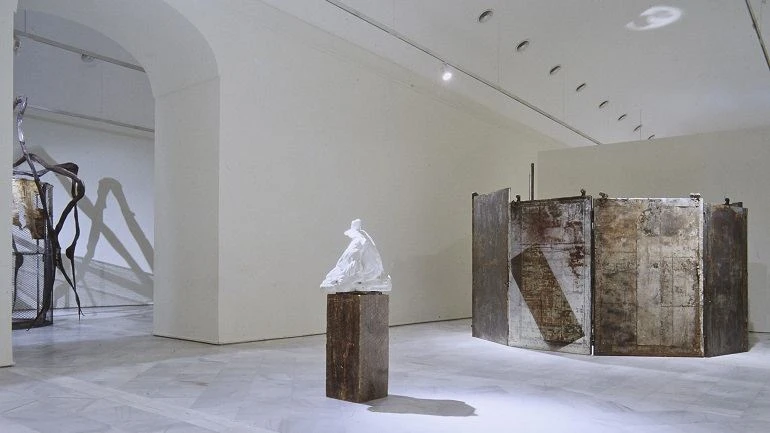Louise Bourgeois. Memoria y arquitectura

With architecture she can rebuild, relive and control the past. Her acceptance of this as a projective and protective sphere dominates her entire career, from the first installations of her Personages: Observer (1947-1949), Pillar (1947-1949), Portrait de Jean-Louis (1947-1949), Woman with packages (1949), made out of wood, until her most recent Cell (Arch of Hysteria) (1992-1993), Precious Liquids (1992), Red Room (Parents) (1994) and Spider (1997), not to mention her series of Lairs, from the Sixties and Eighties.
In this sense, the curators of the exhibition, Jerry Gorovoy and Danielle Tilkin note that architecture in Bourgeois’ work "is not just representation, but a methodology, a way to build a new life. Architecture is an active medium to work through in memory, to achieve self-awareness and protection, to succeed in seduction, survival and escape."
The works gathered in this exhibition exemplify the mysteriously poetic body of work that Louise Bourgeois created over sixty years and which shape the vibrations of her turbulent emotions, the erotic and secret world of her unconscious. We could say that Bourgeois uses architecture to order the chaos, in such a way that she is able to give tangible shape to her fears in order to exorcise them.
The human body plays a role in this gesture of formalising fear by juxtaposing images or architectural solutions to women's bodies. Such is the case in her series of drawings Femme Maison (1946-1947) or her sculptures from Femme Couteau (1982), Femme Maison (1983) or Spiral Woman (1984), all works which demonstrate that Bourgeois’ art is a constant oscillation between working with the world of the body and the projection of the body to the world.
As proposed in this exhibition, autobiography and symbolism feed her creation. Her work reveals fragments of a personal mythology that often, over time, acquires new relations with the past. In this way, the journey through Louise Bourgeois’ work is introspective and retrospective at the same time.
Artists
Organised by
Museo Nacional Centro de Arte Reina Sofía
Image gallery
